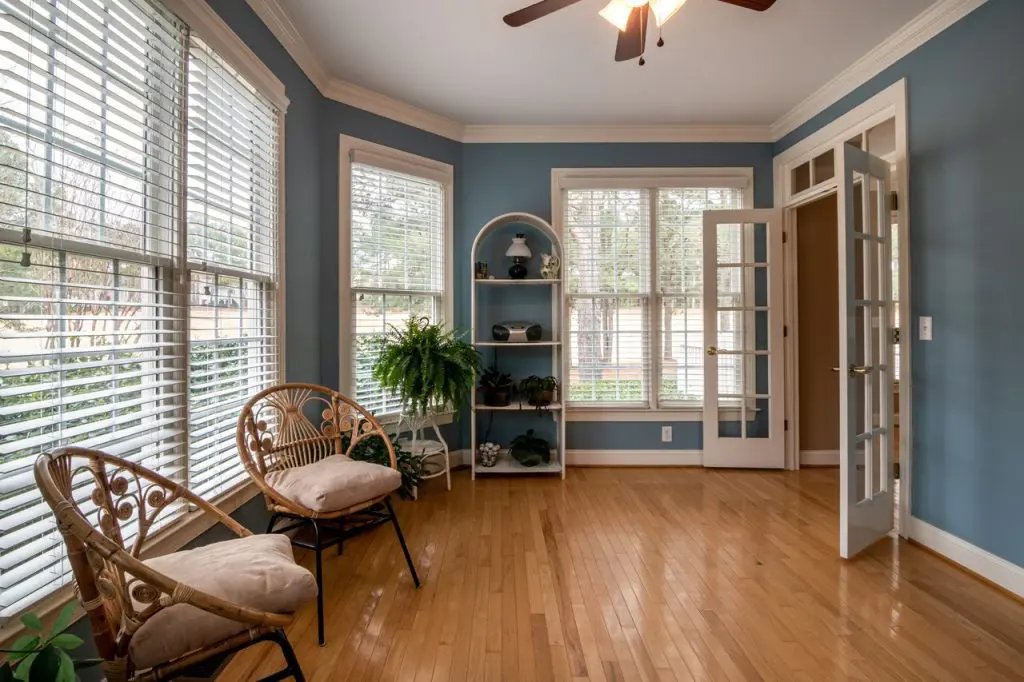Dealing with viruses and flues can be a very tricky and harmful task. The only solution to this, that most people think off is disinfecting your spaces and maintaining good hygiene.
Well in that case here’s a fact, viruses don’t just spread through touch, sometimes there are various hotspots present in our homes where a lot of germs and bacteria reside which ultimately leads to people getting sick.
To avoid situations like these we need to create full gear protection for our homes. So here are a few tips on designing a disease-free house.

1. Designing for Right Amount of Ventilation
Ventilation plays an important role in every space. Nowadays people are switching over to artificial air conditioning systems with the thought that these units protect us from the impacts of heavy outdoor air pollutants. These benefits come along with a whole bunch of consequences.
AC units provide a huge breeding ground for germs and microorganisms that cause intense lung diseases along with polluting the environment. Here are some things you can do to save yourself from the harmful threats in an unventilated environment.
- Balconies– if you are constructing your house from scratch or if you have enough room to accommodate a balcony then do it without even thinking about it twice. Having a decent sized balcony in your living room and bedroom could be very effective in creating a better air movement in your homes. Make sure to have a huge door opening to let the airflow in.
- Skylight– if you do not have scope for a window opening or a balcony then you can go for a skylight. Skylights usually have a fixed opening but it can be customised with an openable shutter.
- Resizing the openings-Incorporating larger windows or sliding glass doors can effectively save us from the issue of poorly ventilated spaces especially in apartments where there is very less room for modifications.

2. Design for Adequate Lighting
Exposure to sunlight can not only naturally disinfect your space but can also prove to be a good source of energy for your mind and body. This makes it important for us to increases the amount of natural light in spaces where we spend most of our time.
- Although having balconies, skylight and increasing the size of windows and doors can provide enough lighting to your living room and other areas where you spend most of your time. But besides these factors you can try increasing the height of your ceiling, this would make room for larger windows and door openings, therefore allowing more light and ventilation in your space.
- Kitchen is also one of those spaces that need proper lighting. Plan your kitchen in a direction such that the early morning rays of sunlight enter your space purifying it naturally.

3. Adding a Guest Washroom
There are several things that we can do to avoid the viruses coming in from any external source. Sometimes we do not think of having a guest washroom attached to our living area. This actually has a tonne of benefits.
If we have guests at our home, they can get themselves cleaned up right there before stepping into any other part of the house. The most adequate location for the guest washroom is the living room or the entrance foyer (if you have one). Make sure to have proper ventilation in this washroom and equip it with all the necessary fixtures.

4. Designing Proper Drianage and Avoid Stagnation
These are 2 major concerns in almost every household. Drainage and stagnation not only create a bad ambience but also make a really good breeding ground for insects and microorganisms. Here are a few things you can do to avoid this-
- Outdoor- we need to plan out a gradual slope directing towards the drainage channel for outdoors. Further, we can cover these channels with the help of pebbles or place some plants over it to avoid direct exposure. Another thing that we can do is avoid having hardscape (pavement, cemented ground etc.) throughout the outdoor area. Add some grass patches on the floor to allow water to seep into the ground.
- Indoors- there are spaces such as balconies, washrooms, areas under the sink etc. where a lot of drainage issue and stagnation occur. Here we need to first locate the exact position of a floor trap then lay the tiles with a gradual slope towards it. This will allow the water to seep into the trap directly.
5. Go Green
Plants are one of the must-haves in every household. They not only purify the internal environment but also add-up as an aesthetical element in your space. You can have plants such as snake plant, spider plant, money plant, Bamboo, Aloe Vera, chrysanthemum etc. to purify your indoors. For the outdoors, you can use dwarf date palm, Boston fern, Chinese evergreen plant, aloe Vera and bamboo.






